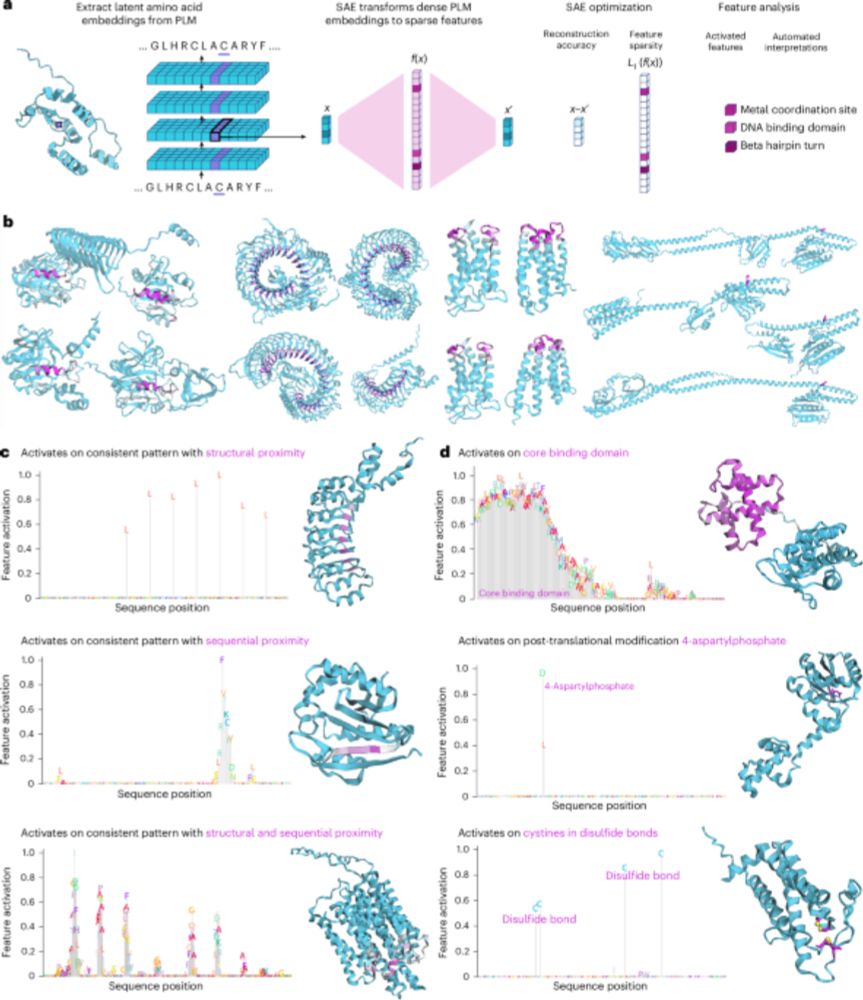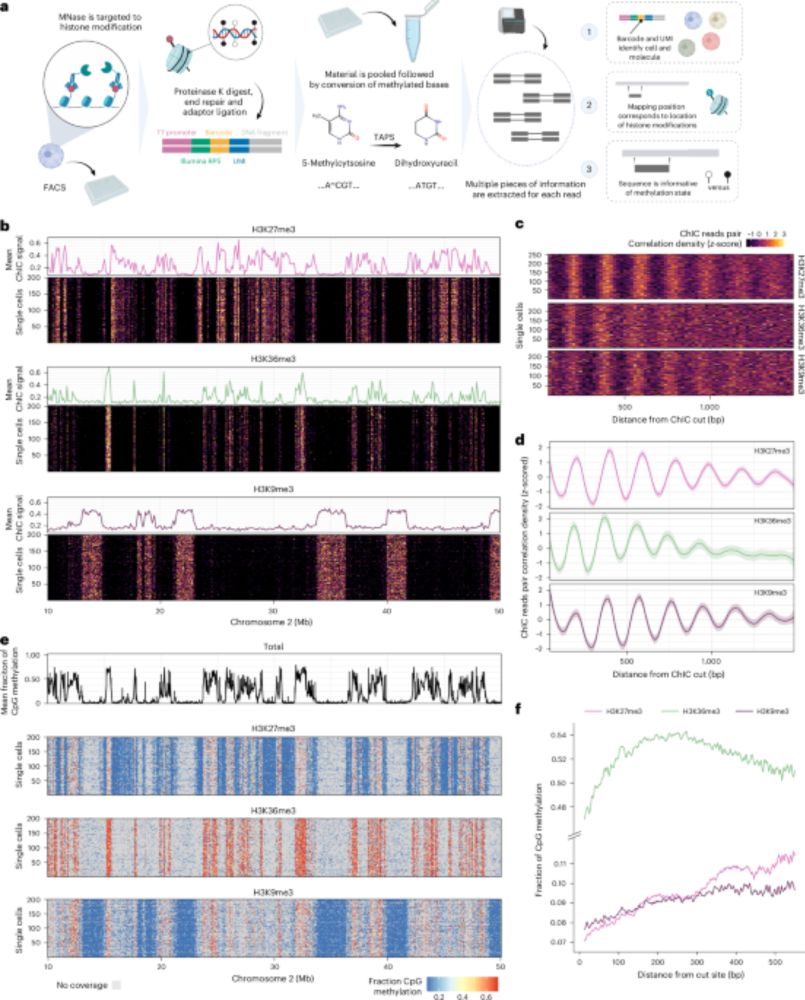👉 Showcase your rare cancer research! #ESMORareCancers26 Chairs Prof. David Thomas, Prof. Eva Tiensuu Janson & Dr. Claudia Valverde highlight why abstracts matter: visibility, expert feedback & networking.
⏰ Submit by 9 Dec 2025.
🔗 buff.ly/0MGWMsn
10.10.2025 16:08 — 👍 2 🔁 3 💬 0 📌 0

📊 Oncologists don’t need to be #AI experts, but they should understand how AI makes predictions and its limits. ESMO President Fabrice André calls for education & interdisciplinary collaboration to improve patient care.
#ESMODailyReporter 👉 buff.ly/wei558Y
#HealthAI #ESMOAI25
08.10.2025 07:00 — 👍 2 🔁 1 💬 0 📌 0


The @ItalianSarcomaGroup consensus paper on extended molecular profiling in mesenchymal tumors is out!
Huge thanks to everyone who contributed to this collaborative effort!
@merlini-ale.bsky.social
doi.org/10.1016/j.cr...
06.10.2025 10:48 — 👍 3 🔁 2 💬 0 📌 0

Now online in Cancer Discovery @aacrjournals.bsky.social: Epigenetic and Transcriptional Programs Define #Osteosarcoma Subtypes and Establish Targetable Vulnerabilities - by Eunice López-Fuentes, Alejandro Sweet-Cordero, and colleagues doi.org/10.1158/2159... @ucsfchildrens.bsky.social
03.10.2025 16:48 — 👍 17 🔁 8 💬 0 📌 0

New review in JCO Precision Oncology by the NEWTS group of the @euroewing.bsky.social consortium:
Recurrent and Refractory Ewing #Sarcoma Phase I/II Trials: Current Perspective From the Euro-Ewing Consortium
ascopubs.org/doi/10.1200/...
International collaboration is KEY for clinical trials!
29.09.2025 11:57 — 👍 3 🔁 1 💬 0 📌 0

🚀 Excited to share scPortrait! Led by Sophia Mädler & Niklas Schmacke w/ the Mann lab — a new @scverse tool for standardized single-cell image data. Enables ML-ready extraction, >1B cell processing, cross-omics, & cancer macrophage insights.
🔗 www.biorxiv.org/content/10.1...
28.09.2025 17:50 — 👍 53 🔁 25 💬 0 📌 1

Taming cancer evolution surprises - Nature Methods
With a focus on the evolutionary forces that shape cancer cell behavior, some researchers work out ways to outmaneuver cancer.
With a focus on the evolutionary forces that shape cancer cell behavior, some researchers work out ways to outmaneuver cancer, according to a feature in Nature Methods. #medsky 🧪
27.09.2025 19:16 — 👍 31 🔁 10 💬 1 📌 0
The Biodiversity Cell Atlas white paper is out! A bold vision to map the diversity and evolution of cell types across the tree of life 🌍
24.09.2025 16:53 — 👍 21 🔁 3 💬 0 📌 0
EWS::WT1 Isoform-Dependent Regulation of Neogenes in Desmoplastic Small Round Cell Tumors https://www.biorxiv.org/content/10.1101/2025.09.22.676906v1
24.09.2025 00:35 — 👍 4 🔁 3 💬 0 📌 0
Hi I'm Kate, community lead for Medical.watch. Want practice changing updates in oncology/hematology? Get our weekly newsletter and join 2700+ clinicians.
Subscribe for free: Medical.watch
About us: tinyurl.com/Medicalwatch
K99/R00 NIH NCI Postdoctoral Fellow at @ChildrensLA. Using #zebrafish 🐟 to learn more about human cancer #EwingSarcoma AmatrudaLab
Executive Editor of Cancer Discovery, published by AACR. Harvard BBS/Dana-Farber alum. Native New Yorker. Posts are my own. She/her https://aacrjournals.org/cancerdiscovery
Scientist at DKFZ and EMBL in Heidelberg, loving stats, genomics and genetics. @OliverStegle@genomic.social. For group news see @steglelab.bluesky.social
Group leader @gustaveroussy.fr. Computational Oncology 💻 | Cancer genomics 🧬 | Clonal Hematopoiesis and Leukemia🩸
Professor @ox.ac.uk
We use zebrafish to study how cancer starts and spreads.
Prof of Computer Science and Life Sciences @ EPFL Previously @ Stanford
ML🤖+Bio🧬 https://brbiclab.epfl.ch/
Italian - American scientist interested in DNA repair, repetitive DNA and Ribosome Heterogeneity. Microscopy and Imaging enthusiasts. Nanopore aficionado.
International Open Access journal publishing on molecular and translational medicine. IF 2024,9.4; Scopus Citescore 2024, 8.4.
Associate Editor Reviews @Nature Biotechnology. Views are my own.
Your friendly neighborhood geneticist 🇱🇧
Pediatric cancer epigenetics 🧬 | CCS and TFRI scholar 🇨🇦 | PhDc Jabado & Garzia labs @McGill.ca
The European Society for Medical Oncology (ESMO) is a reference organisation for cancer education and information, supporting the oncology community’s work.
he/him - writing statistical software at Posit, PBC (née RStudio)🥑
simonpcouch.com, @simonpcouch elsewhere
Associate Professor of Biostatistics and Biomedical Engineering at Johns Hopkins. stephaniehicks.com
Assistant Professor, UBC school of Biomedical Engineering. Trying to enable personalized medicine by solving gene regulatory code.
Pediatric neuro-oncologist, Asst Prof U-Michigan | Cancer researcher | RNA & ribosome enthusiast | Broad Institute, DFCI alum | book & music & tea lover | Dad | Views are mine (he/him). https://prensnerlab.org
Computer scientist interested in AI, math and biology
Group leader@Cancer Research UK, University of Cambridge
An inter-institutional collaborative #spatialbiology technology hub under @researchlifesci.bsky.social that offers access to cutting-edge #spatialomics technologies.
https://www.health-life-sciences.de/multispace/



























